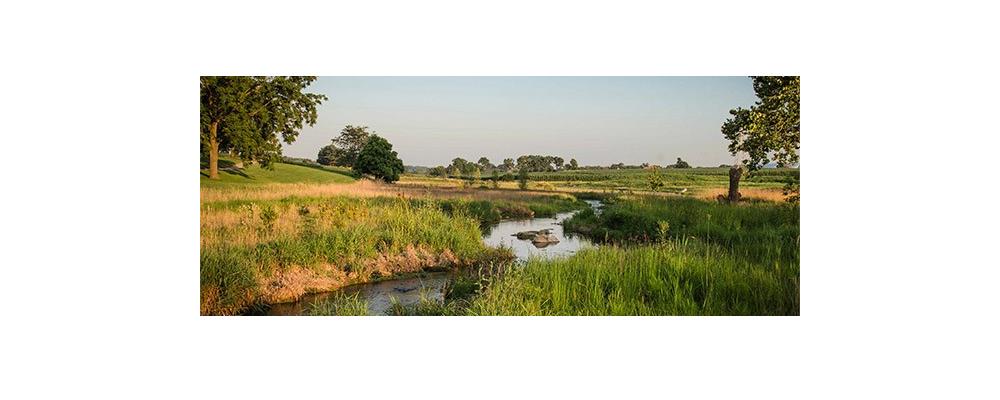
- This event has passed.
Brubaker Run Floodplain Restoration Commencement Ceremony

Oak Tree Development Group, a Lancaster-based real estate development company, is partnering with East Hempfield Township on an expansive water quality initiative located within the proposed 98-acre Lime Spring Square commercial development project. This major floodplain restoration project will help the Township meet its EPA directed Chesapeake Bay pollution reduction goals at no cost to taxpayers. The restoration efforts will remove an estimated 35,000 cubic yards (38,500 tons) of legacy sediment from the floodplain during construction.
Efforts to clean up the Chesapeake Bay have intensified in recent years, resulting in an increased level of regulation for governments and private industries. In January 2016, the Pennsylvania Department of Environmental Protection (PADEP) started requiring municipalities and the state government to expend considerable resources to address pollution reduction requirements for MS4s as part of its “reboot” to the Chesapeake Bay efforts. At the same time, many companies, municipalities, and business operations have less money available to address these issues due to the economy, associated government spending cuts, and smaller operating and capital expenditure budgets.
East Hempfield Township is required by its MS4 permit to reduce sediment pollution by at least 10 percent, or approximately 346 tons of sediment in the Little Conestoga Creek Watershed. Once constructed, the Lime Spring Square project, using the PADEP-approved floodplain restoration Best Management Practice (BMP), will have an estimated annual sediment load reduction of 250 tons (115 lb/ft/yr per PADEP PRP Instructions 3/2017). The amount of sediment pollution removed each year by the project will equal that of approximately 64 miles of buffers installed on both sides of the stream, which would have cost the public as much as $5.6 million. Both the Oak Tree Development Group and the Township will benefit from using floodplain restoration. Furthermore, Oak Tree expects to gain as much as 100,000 square feet of additional leasable space on the project site. The Township will gain an 11-acre recreational park in addition to the MS4 pollution reduction credits beyond Oak Tree’s permit obligations.
Update (5/31/18): Since completion of the project, we were able to update our calculations based on site measurements and monitoring which results in a sediment load reduction of 400 tons per year.
Implementing the floodplain restoration BMP is a unique opportunity for local and state governments in Pennsylvania to join forces with the private sector to maximize funding sources and create substantive rather than symbolic water quality benefits that can be applied to the Environmental Protection Agency (EPA) mandated water quality improvements for the commonwealth. The restored and functioning stream system results in two synergistic benefits that are of significant interest to the public and private sector: (1) pollutant load reductions and (2) stormwater management. The multiple and overlapping benefits require that floodplain restoration projects be looked at holistically within the context of the development site rather than the traditional “each side of the creek” approach to stormwater management. Significant hurdles exist currently to optimizing benefits of this BMP and a public/private partnership to its full potential because floodplain restoration does not “fit” within traditional stormwater BMP thinking within the various state agencies.
By looking beyond traditional ways of developing and permitting stormwater BMPs, land development provides a significant opportunity for both economic and environmental gains for the private and public sectors. The private sector may have the financial resources to fund the implementation of floodplain restoration as part of the land development planning, permitting, and construction process, while benefitting from the additional developable space that would otherwise be required to implement traditional stormwater BMPs. Local and state governments benefit from the pollution reductions and the community benefits from cleaner water, additional wildlife habitat, and enhanced aesthetics.
